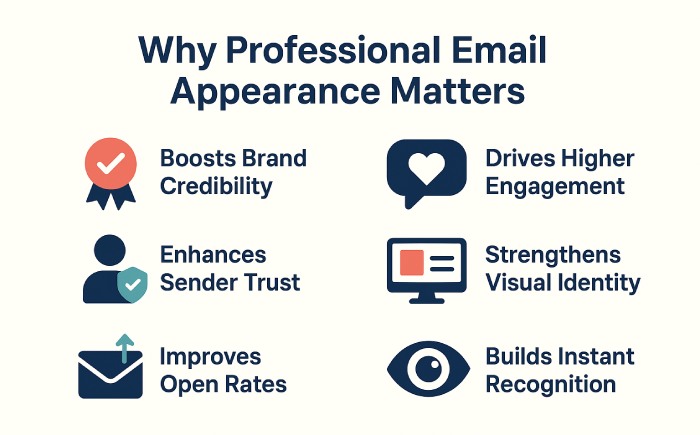How does BIMI complete the email authentication story?
Your emails are not inherently secure. This means when you send emails to your clients, there’s nothing in the default email protocol that guarantees the message actually came from you or wasn’t manipulated along its way.
However, with email authentication protocols like SPF, DKIM, and DMARC, you can prove that your emails are legitimate and protect your domain from spoofing, but that’s only meant for the receiving server. What about your recipients?
Your recipients also need assurance that the email in their inbox is actually from you, and most importantly, they should be able to tell instantly, without digging into headers or technical details. That’s precisely what BIMI (Brand Indicators for Message Identification) does.
In this article, we will understand what exactly BIMI is and how it completes the email authentication story.
What is BIMI?
It is safe to say that when you send emails to your clients, your goal is simple— you want them to recognize, trust, and engage with your message. But in a cluttered inbox filled with marketing emails, promotions, and phishing attempts, even legitimate emails can struggle to stand out.
But with BIMI, you can solve this problem.
Brand Indicators for Message Identification is an authentication protocol that lets your verified brand logo appear right next to your emails in your recipients’ inboxes. So, when they come across your email, they instantly know it is from you; a brand they recognize and can trust.
Behind the scenes, BIMI builds on existing authentication protocols such as SPF, DKIM, and DMARC. These email authentication standards ensure that your emails are verified and not tampered with. Once your domain passes those checks and your logo is verified through a Verified Mark Certificate (VMC), email services like Gmail and Yahoo can show your logo next to your messages in the inbox. Although a small visual cue, it adds a strong layer of trust. Your recipients no longer have to guess whether an email is legitimate; they can see it right away.
How does BIMI build on SPF, DKIM, and DMARC?
SPF, DKIM, and DMARC are fundamental email authentication protocols that ensure that your emails are verified, untampered with, and secure for your recipients to engage with.
SPF checks if the email is sent from an approved server, DKIM ensures the content hasn’t been altered, and DMARC sets rules for how to handle emails that fail these checks.
BIMI builds on this foundation. Once your email passes the three authentication checks, you can implement BIMI and have your verified logo appear next to your emails in recipients’ inboxes.
This simple step turns all the behind-the-scenes authentication into something your recipients can actually see. It helps your emails look more legitimate, builds instant recognition, and adds a clear layer of trust every time your message appears in someone’s inbox.
How does BIMI take email authentication a step further?
As we established earlier, BIMI builds on the foundation laid by the three most fundamental email authentication protocols—SPF, DKIM, and DMARC. These protocols tell the receiving server that the incoming email is verified, unaltered, and comes from an authorized source. While the receiving server can be assured that the email is secure, the recipient deserves the same assurance, and BIMI fills that gap.
This not only makes your brand trustworthy for its customers but also raises the bar for attackers. After all, they can no longer slip into your clients’ inboxes pretending to be you, because only verified domains that pass all authentication checks can display their official brand logo.
Moreover, even if someone tries to spoof your brand, their message will appear without a logo, and your recipients will easily be able to spot the difference. This simple visual cue adds a layer of security and credibility to your emails, which is exactly what you’re trying to achieve through email authentication.
What are the next steps?
While you might think authenticating your domain with basic authentication protocols is enough, it’s only the first step. SPF, DKIM, and DMARC authenticate your domain on a technical level, but they don’t communicate the sense of trust directly to your recipients.
But with BIMI, that trust becomes visible. After setting up SPF, DKIM, and DMARC, you can enable BIMI to display your verified brand logo beside your emails. It’s a straightforward way to show authenticity at first glance and reinforce your brand’s credibility every time your message reaches an inbox.
So, if you want to give your brand that added edge to stand out in a crowded mailbox while maintaining the highest standards of email security, BIMI is the way to go. Once you have your authentication protocols up and running for your domain, the next step is to get a Verified Mark Certificate (VMC) for your brand logo and publish a BIMI record in your DNS.
Want to get started with BIMI for your domain? Reach out today to know more!




